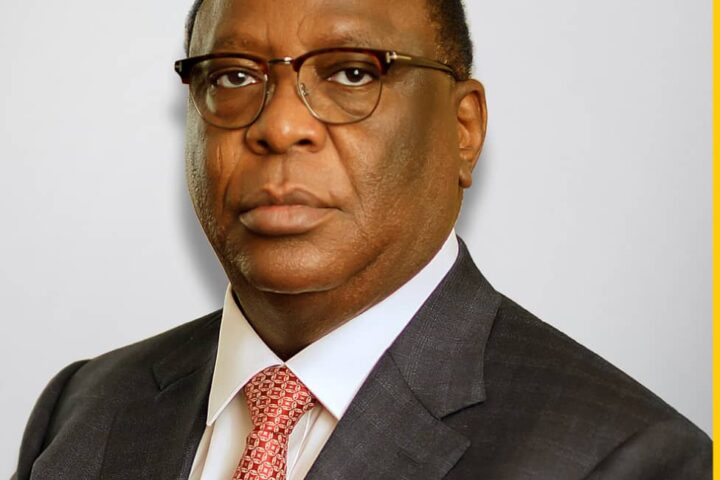By Blaise Udunze
In Nigeria’s banking industry, profit has become more a press release than a performance. Every results season, the same storyline plays out with record profits, rising assets, and promises of “strong fundamentals.” Yet, beneath the eye-catching headlines lies a quiet deception of a pattern of accounting charades aimed at repressing the true picture of reality and skyrocketing success.
An analysis of the 2025 half-year results from ten leading financial institutions like Zenith Bank, GTCO, UBA, First HoldCo, Access Holdings, Stanbic IBTC, Wema Bank, FCMB Group, Sterling HoldCo, and Jaiz Bank exposed a pervasive culture of concealment. What the market is celebrating as a season of extraordinary profitability is, in truth, a story of concealed losses, revalued deceptions, and selective disclosure.
Zenith Bank reported a pre-tax profit of N625.6 billion, yet its trading gains fell by N328 billion and credit impairments jumped 83 percent. GTCO, the self-proclaimed profit leader, showed N900.8 billion in pre-tax earnings, but once last year’s N523 billion one-off fair-value gain is removed, actual profit declined by 26 percent.
UBA’s earnings were flattered by revaluations, while its interest expenses exploded from N328.9 billion to N560.6 billion. Its trading desk flipped from a N98 billion gain to a N10 billion loss, forcing a drastic cut in interim dividends.
First Bank HoldCo’s books told their own story that despite higher revenues, pre-tax profit fell due to a N486 billion collapse in trading income from a N432 billion gain in 2024 to a N53.7 billion loss in 2025.
Impairments doubled to N185 billion as the bank exited CBN’s forbearance regime, revealing losses long deferred.
Access Holdings reported N2.5 trillion in gross earnings, but its statement of comprehensive income disclosed a N62.4 billion loss to shareholders driven by N155.9 billion in forex translation losses and N74.4 billion in fair-value write-downs. Profit at the top, destruction of value at the bottom.
Stanbic IBTC’s growth was buoyed by asset sales, not sustainable income. Wema Bank’s celebrated 229 percent profit surge rested on a fragile base: interest expenses rose 34 percent, while impairment charges remained suspiciously light at just N532 million.
FCMB Group’s digital-era optimism could not hide the 35 percent slump in non-interest income following the loss of revaluation gains, or the N36.2 billion impairment that followed once regulatory leniency expired.
Sterling HoldCo trumpeted a 157 percent jump in profit, which looks less impressive when you realise it was achieved in the shadow of a N100 billion recapitalization. The group admits it still needs N53 billion more to meet regulatory capital. Meanwhile, its cost-to-income ratio remains a heavy 64.5 percent, and non-performing loans hover above the 5 percent prudential threshold.
Jaiz Bank, meanwhile, announced N14.45 billion in profit, but its total assets shrank by N100 billion, and its operational cash flow swung from a N428 billion inflow to a N119 billion outflow with profit on paper and erosion in practice.
Behind the curtain of impressive numbers, a silent manipulation is taking place. Creative accounting, selective disclosures, and reclassification tricks have become tools in the bankers’ art of survival.
Insiders in the banking sector admit, off the record, that “results management” has become a normalised practice. The strategy is simple as in where the true numbers would reveal losses or mounting risk, the presentation is massaged to reflect strength. Loss-making subsidiaries are quietly merged into group accounts where their poor performance is diluted.
Bad loans are reclassified as “restructured assets” or shifted into special-purpose vehicles that sit conveniently off the parent bank’s main balance sheet.
The Central Bank of Nigeria (CBN) bears part of the responsibility. In recent years, its supervision appears more reactive than proactive. While the apex bank routinely sanctions banks for minor customer-service infractions, it has been slow to demand full disclosure on FX exposures, hidden losses, or aggressive revaluations.
Transparency is not a threat to stability; it is its foundation. A banking system that hides its weaknesses under glossy financial statements is like a house built on borrowed sand.
The real problem facing Nigerian banking today is not liquidity or profitability; it is credibility. When numbers are manipulated, when press releases are crafted to deceive, and when regulators turn a blind eye, the trust that underpins the entire financial system begins to erode. Depositors no longer believe in transparency. Investors no longer trust the data. Even genuine success stories are viewed with suspicion.
For too long, the industry has mistaken perception for progress. Banks inflate interest income in a high-rate environment, then bury the cost of risk in footnotes. They celebrate foreign-exchange gains in one year and quietly dismiss translation losses the next. They rely on regulatory forbearance to delay recognition of bad loans, then call the resulting impairments “non-recurring.”
Dividends are weaponised to signal confidence even when retained earnings are flat. Capital raises are packaged as expansion plays when, in reality, they are patchwork efforts to maintain solvency.
And nowhere in these results, not even in the glossy CEO quotes, did we find a serious discussion of declining cash generation or sustainability of earnings once interest rates normalise. None of these manoeuvres strengthens the banking system; they only postpone accountability.
The way forward begins with truth. Banks must be compelled to present their financials in full, not selective highlights crafted for headlines.
The CBN must demand clearer disclosures on FX positions, loan restructuring, and the sources of non-interest income, while requesting that banks disclose core operating profit separate from one-off gains and trading income; front-load cash-flow data; publish detailed impairment breakdowns that show exposures by sector and vintage; explain capital raises transparently; and align dividends with free cash flow, not cosmetic accounting profits.
Auditors must rediscover their professional conscience and not rubber-stamp whatever management wants. Journalists and analysts must drill into the notes of the accounts, asking why interest income is rising while impairment and non-performing loans are rising too.
The health of the financial system depends not on who can publish the biggest profit figure, but on who can prove that the profit is real, repeatable, and resilient.
Until then, the public is advised to read every “record result” with skepticism. Because in Nigerian banking today, what the headlines celebrate, the balance sheets quietly contradict.
If the current trend continues, the supposed “profits” of today may soon be revealed as the losses of tomorrow.
A bank’s greatest asset is not capital; it is credibility. And once that is lost, no amount of cooked numbers can restore it.
Blaise, a journalist and PR professional writes from Lagos, can be reached via: blaise.udunze@gmail.com
















